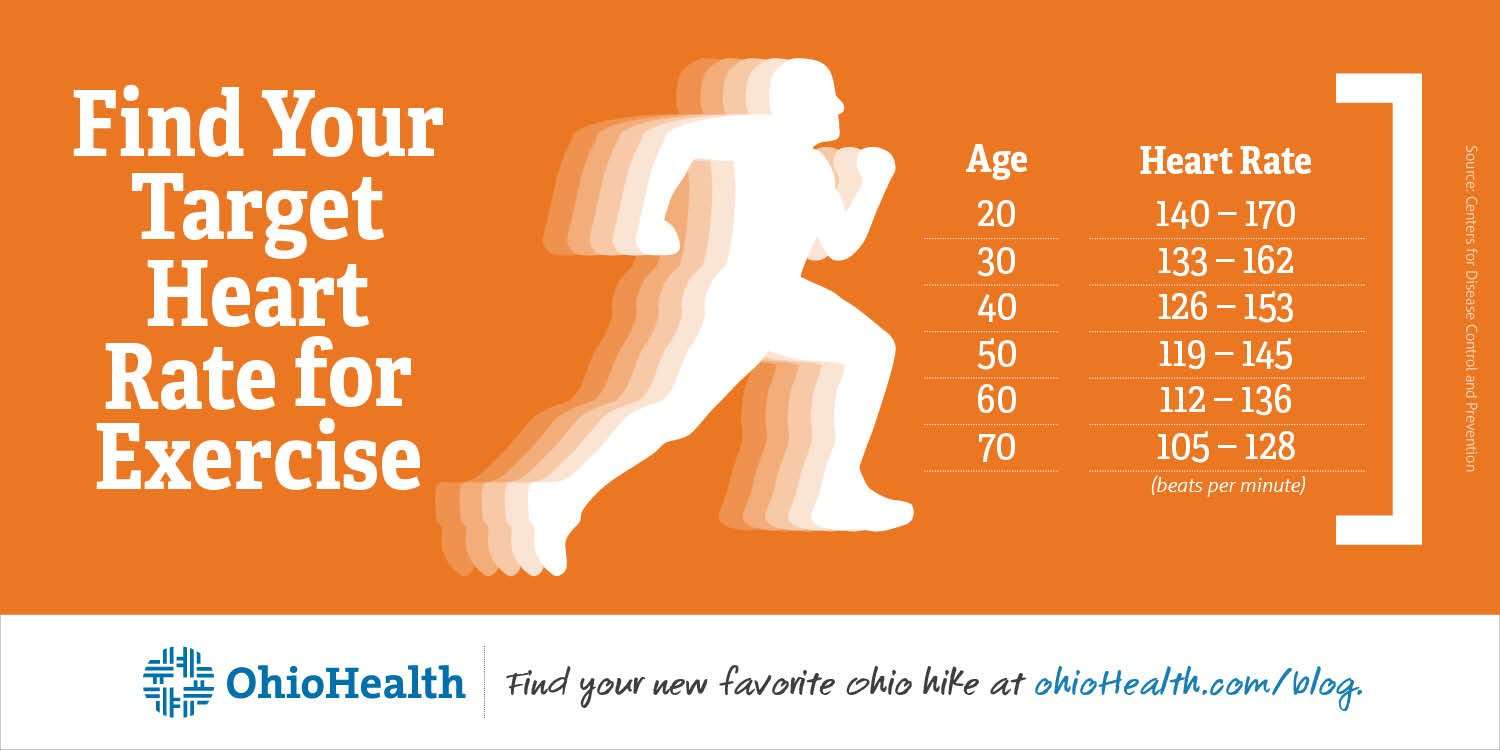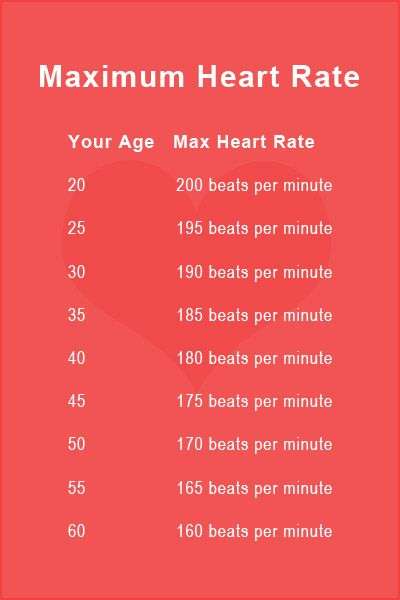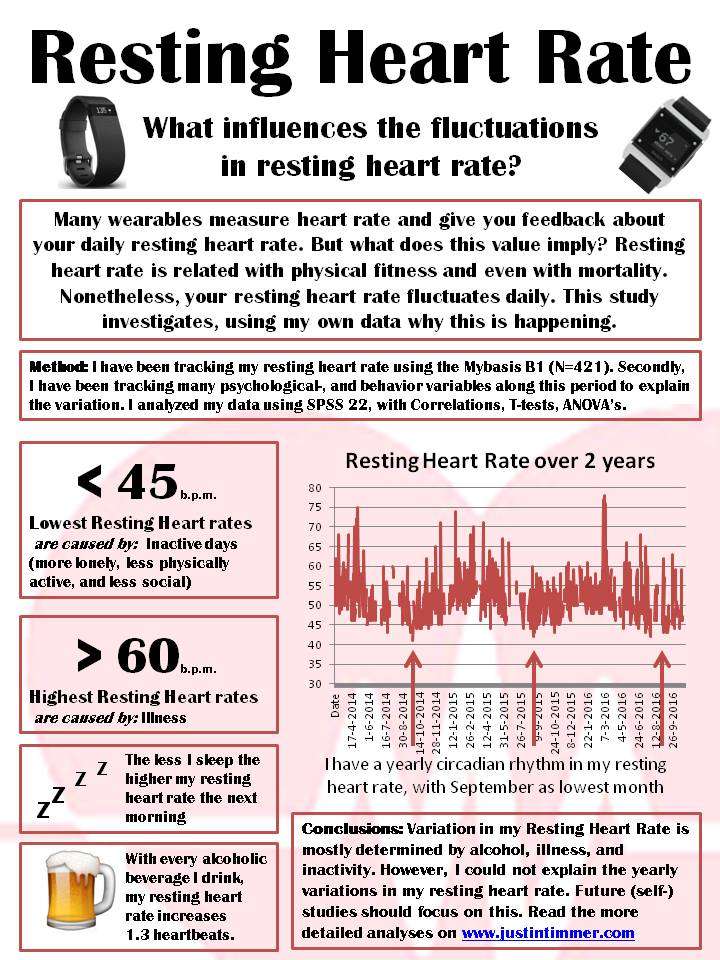When You Need A Rest
Better physical fitness translates to a lower resting heart rate, but that doesnt mean more exercise is always better. In fact, once you start overtraining by exercising too much, your resting heart rate will start to increase. A study in the Journal of Sports Sciences monitored the exercise intensity and heart rates of trained cyclists. When athletes overtrained, their resting heart rates increased. A review in the journal Sports Health hypothesized that these reactions may be due to stress and inflammation, though more research is needed. According to the American Council of Exercise, other signs of overtraining include decreased performance, excessive fatigue, moodiness and insomnia, among other symptoms.
Recommended Reading: Can Anemia Cause Heart Failure
What Is An Irregular Pulse
An irregular pulse is when the heart doesn’t beat in a regular, steady rhythm. This is also called an irregular heart rate or an arrhythmia.
If your heart rate is irregular, you may notice that your pulse:
- seems irregular or is ‘jumping around’
- is racing, even when you’re at rest
- seems unusually slow some or most of the time.
What Are Heart Palpitations
A heart palpitation is when you suddenly become aware of your heart beating, usually in an irregular way. Sometimes you can feel it in your ears or your chest when youre lying down. Your heart beat may feel:
- too fast or slow
- like its fluttering
- like its thudding, or pounding.
It is not unusual to feel heart palpitations occasionally and mostly they are harmless. However if youre experiencing them on a regular basis, see your doctor.
Recommended Reading: Fitbit Charge 2 Heart Rate Accuracy
How Do You Check Your Pulse
You can measure your heart rate manually by checking your pulse. Follow these three steps.
- Find your pulse in your wrist .
- Count each beat for a total time of 30 seconds.
- Double the number of beats you counted. This is your heart rate or pulse, measured in beats per minute.
Also make a note of whether your heart beats at an even or uneven rhythm. A normal heart beats at a steady rhythm like a clock, tick tock tick tock.
Some people like to use a heart rate monitor to measure their heart rate. These monitors are often included in fitness trackers, which are now widely available in sports stores and other retail outlets. However, their accuracy depends on the quality of the device.
Why Do You Want To Increase Your Heart Rate During Exercise

Although you want your resting heart rate to be on the lower end of the scale, you need to be reaching a higher heart rate during exercise for the biggest and best health benefits. Getting your heart beating faster than its resting rate improves your cardiovascular health, helping your heart to move blood and oxygen to your muscles more efficiently. This process also burns calories, helping with metabolism and weight loss.;
Read Also: Does Acid Reflux Cause Heart Palpitations
How To Measure Heart Rate
Measuring your heart rate is easy to do if you follow some simple steps. The easiest place to measure your heart rate is on your wrist, just below the base of the thumb. Place your index and middle fingers between the bone and tendon at the base of your thumb. Once you feel your pulse, count the number of beats you feel in 15 seconds. Once youve counted how many pulses, youll multiply that number by four. This gives you the total amount of times your heart beats in one minute. For example, if your heart beats 18 times in 15 seconds, your heart rate is 72 beats per minute.
Its important to measure your heart rate when youre in a relaxed state. If you take your pulse after any strenuous activity, you wont get an accurate reading. You should wait for one to two hours after exercising to take your resting heart rate, and an hour after consuming caffeine, according to Harvard Health.
Dont Miss: Does Acid Reflux Cause Heart Palpitations
Clinical Contributors To This Story
Sarah L. Timmapuri, M.D. contributes to topics such as Cardiac / Heart Health, Exercise / Fitness.
If your heart is racing as youre sitting reading this article, its possible your body is trying to tell you something. A high resting heart rate, or a heart rate of more than 100 beats per minute, means your heart is working extra hard to pump blood through your body. And, that extra effort could result in a wide range of negative effects on your overall health, including feelings of dizziness and fatigue and most seriously blood clots, heart failure and, in rare cases, sudden death.
Normal resting heart rate is anywhere between 60 and 100 beats per minute, and its simple to check how fast yours is beating. While idle, hold your pointer and middle finger between your bone and tendon on the thumb side on your wrist until you feel your pulse, and count the number of beats for a minute that is your resting heart rate.
Certain aspects of someones resting heart rate are directly connected to uncontrollable factors, such as age and genetics, however there are certain actions that be taken to help decrease heart rate and improve overall wellbeing for those whose resting heart rate is above normal.
Here are six proven ways to lower your resting heart rate:
Don’t Miss: List The Steps Of How To Calculate Your Target Heart Rate Zone
Healthy Hearts Recover Fast
If you are healthy and fit, your heart will recover quickly after exercise, promptly returning to a lower rate. If you are out of shape, however, youre likely to be huffing and puffing after a workout, while your heart rate stays high for a longer time. You can assess this by measuring your heart rate recovery the difference between your beats per minute;when exercising vigorously and your beats per minute;one minute after stopping exercising.
To find your HRR, exercise at a high intensity for a few minutes. High-intensity exercise is when you cant say more than three or four words without significant effort, and are breathing mostly through your mouth, Dr. Sinha says. Stop exercising and immediately measure your heart rate, then again one minute later. A decrease of 15-25 beats per minute;in the first minute is normal. The higher the number of decrease, the fitter you are.
The difference between those two numbers can also tell you something about your risk of dying from a heart attack, Dr. Sinha adds. Studies show that if it drops by 12 or fewer beats in that one minute after exercise, you have a higher risk of death from heart disease.
Legs Up The Wall To Reduce Resting Heart Rate
The legs up the wall pose is a therapeutic yoga pose that helps your body and mind relax. To do the Viparita Karani pose:
Try to stay in this pose for 5 minutes. It doesnt need to be perfect. Even having your legs above your heart works if youre relaxed.
Viparita Karani improves circulation as gravity helps blood flow from your legs back to your heart. Because your heart doesnt need to work as hard, your heart rate lowers.
You May Like: How To Calculate Max Hr
Tips For Improved Sleep
When youre sound asleep, your body is wide awake. Welcome its feedback, listen closely to what it has to say, and take steps towards optimizing your sleep.
Use the following tips to help boost your sleep routine:
- Try to wake up at the same time seven days a week.
- Time your meals mindfully; late meals may show up as the Downward Slope.
- If your sleep pattern is optimal , take notes. Think about what you did the previous day and continue to make similar choices.
Read More About What Your Sleeping Heart Rate Can Tell You:
How Do I Get My Heart Rate In The Target Zone
When you work out, are you doing too much or not enough? Theres a simple way to know: Your target heart rate helps you hit the bullseye so you can get max benefit from every step, swing and squat. Even if youre not a gym rat or elite athlete, knowing your heart rate can help you track your health and fitness level.
Also Check: How Does Anemia Cause Heart Failure
Influencers Of Heart Rate For The Long
- Hyperthyroidism – This disorder of the thyroid causes the heart to increase its rate as long as the condition is untreated. Medication, surgery and other treatments can treat hyperthyroidism and the heart rate will return to normal ranges.
- Congestive heart failure – This heart problem is one wherein the heart must work extra hard to pump blood. This eventually will lead to heart attack.
- Arrhythmias – These “irregular heartbeats” are inconsistencies in the speed of the heart’s activity. The condition is usually due to salt imbalance in the body, heart attack or other problems.
- Nerve damage – Often occurring in the peripheral nervous system branching into arms and legs, this condition affects nerves attached to the heart. Diabetes is sometimes a cause of this problem. The underlying condition must be treated.
- Anemia – Low red blood cell count due to lack of enough iron or excessive bleeding can increase the heart rate as the heart works to supply less healthy blood throughout the body. This can be treated through medication or procedures such as infusion.
Pulse Rate Analysis
Your Maximum Heart Rate

The rate at which your heart is beating when it is working its hardest to meet your body’s oxygen needs is your maximum heart rate. Your maximum heart rate plays a major role in setting your aerobic capacitythe amount of oxygen you are able to consume. Several large observational studies have indicated that a high aerobic capacity is associated with a lower risk of heart attack and death. And a small controlled trial demonstrated that men and women with mild cognitive impairment who raised their aerobic capacity also improved their performance on tests of memory and reasoning.
Don’t Miss: Can Too Much Vitamin D Cause Heart Palpitations
Target Heart Rate Calculator
Ever ask yourself, “how do I find my target heart rate?” Finding your target heart rate is easy with our target heart rate calculator. Target heart rate calculation can be determined for any age and activity level, enabling you to use a heart rate monitor and get the most benefit from your workouts.
Is Resting Heart Rate Different By Age
For most of us , between 60 and 100 beats per minute is normal.1 The rate can be affected by factors like stress, anxiety, hormones, medication, and how physically active you are. An athlete or more active person may have a resting heart rate as low as 40 beats per minute. Now thats chill!
When it comes to resting heart rate, lower is better. It usually means your heart muscle is in better condition and doesnt have to work as hard to maintain a steady beat. Studies have found that a higher resting heart rate is linked with lower physical fitness and higher blood pressure and body weight.2
Also Check: Reflux And Palpitations
The Downward Slope: Your Metabolism Working Overtime
The Downward Slope is a sign that your metabolism is working overtime. Did you have a late meal, a late workout, or a glass of wine before bed? If your RHR starts high and reaches its lowest point right before you wake up, you may start the day feeling groggy.
If you regularly see this downward slope, it may be wise to stop and reassess your evening routine. For example, if you normally work out late at night, exercising; 12 hours earlier can result in positive changes.
What Your Heart Rate Is Telling You
Your pulse, both at rest and during exercise, can reveal your risk for heart attack and your aerobic capacity.
Your grandmother may have referred to your heart as “your ticker,” but that nickname has proved to be a misnomer. A healthy heart doesn’t beat with the regularity of clockwork. It speeds up and slows down to accommodate your changing need for oxygen as your activities vary throughout the day. What is a “normal” heart rate varies from person to person. However, an unusually high resting heart rate or low maximum heart rate may signify an increased risk of heart attack and death.
One simple thing people can do is to check their resting heart rate. It’s a fairly easy to do and having the information can help down the road. It’s a good idea to take your pulse occasionally to get a sense of what’s normal for you and to identify unusual changes in rate or regularity that may warrant medical attention.
Also Check: Can Acid Reflux Cause Palpitations
How Do I Take My Heart Rate
There are a few places on your body where itâs easier to take your pulse:
- The insides of your wrists
- The insides of your elbows
- The sides of your neck
- The tops of your feet
Put the tips of your index and middle fingers on your skin. Press lightly until you feel the blood pulsing beneath your fingers. You may need to move your fingers around until you feel it.
Count the beats you feel for 10 seconds. Multiply this number by six to get your heart rate per minute
How To Maintain A Normal Range Of Heart Rate Variability
Although genetic factors have a high say in this matter one can maintain a normal range of heart rate variability by maintaining proper health, sticking to a fitness regime, managing stress, and following recovery methods like meditation. As a thumb rule maintaining a stress-free life is the base rule for a normal range of HRV.
Although exact heart rate variability range is a tricky one to answer knowing it is good as you can be aware of your health condition by tracking HRV.
Sudheendra is a passionate blogger for 8 years and holds a Degree in Journalism & Mass Communications. His writings particularly focus on health, medicine, diet & lifestyle. For him, everything that interlinks and relates to health & medical world entices him. His write-ups aim at educating people not by just giving facts but by infusing human touch.
Also Check: How Accurate Is Fitbit Charge 2 Heart Rate
How To Measure Your Heart Rate
Measuring your heart rate is the same as checking your pulse. The easiest, most common places to find your pulse or someone elses pulse is at the wrist or the side of the neck.
- To measure pulse from the wrist, press your index and middle fingers on the inside of the wrist, right below the base of the thumb.
- To measure pulse from the neck, press your fingers on the neck to the side of the windpipe.
When you feel your pulse, take a few moments to take note of its strength and rhythm. When ready, count the beats you feel for 60 seconds. Alternatively, you can measure the pulse for 30 seconds and double the number to get the beats per minute. Learn more about how to check your heart rate.;
If you prefer a more tech-inclined method, there are many fitness trackers and dedicated heart rate monitors that not only can track your heart rate automatically, but also help you set specific goals.
Also Check: Acetaminophen Heart Rate
Here Are A Few Ways You Can Monitor Your Heart Rate During Your Workouts

- The old fashioned way and the same way you tested your resting heart rate. Fingers on your wrist and count your heart rate for 60 seconds. Or do 30 seconds and then double it.
- The most accurate way to monitor your heart rate is by using trackers that attach to your chest just under breast bone and below your heart. It sends the results to your phone or smart watch and you can get real time accurate results
Recommended Reading: Acid Reflux Heart Fluttering
Bradycardia: How Low Is Too Low
While a normal sleeping heart rate can dip below 60, the Cleveland Clinic explains that a sustained heart rate below 60 when you’re not sleeping or resting may be a medical condition called bradycardia.
Bradycardia is a condition that increases with age. It’s most common in men and women over age 65, Cleveland Clinic says. Although healthy and fit young people and trained athletes can have heart rates down into the 40s without any symptoms, bradycardia may cause symptoms for other people. These can include:
- Confusion.
- Weakness.
The most common cause of symptomatic bradycardia is a problem that develops with the heart’s natural pacemaker, called the sinus node, Cleveland Clinic notes. There may also be a block of electrical signals between the upper and lower chambers of the heart, called an AV block. Another common cause is a heart or blood pressure medication that slows down the heart, it says.
“Symptoms of bradycardia may only be felt during activity. You could have a heart rate of 50 at rest without any symptoms, but if you get up and active, even a heart rate of 60 or 65 could be too slow and cause symptoms. If you have symptomatic bradycardia, you may need treatment,” Dr. Santucci says.
Mayo Clinic recommends letting your doctor know if you’re not a trained athlete and your resting heart rate is under 60. This is even more important if you have symptoms of bradycardia.
